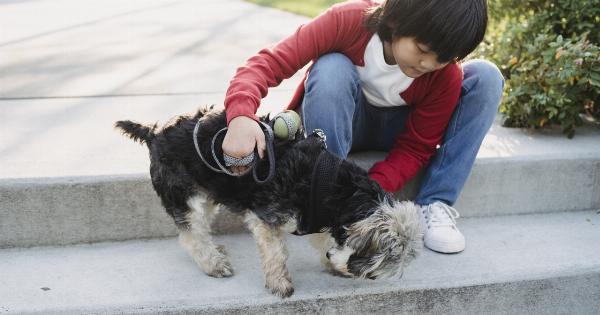Dogs are often referred to as man’s best friend. They are loyal, loving, and bring so much joy to our lives.
However, did you know that dogs can also save lives by detecting cancer? It may sound like something out of a science fiction novel, but it’s true. Dogs have the ability to detect cancer with a high degree of accuracy. In this article, we’ll explore how dogs are being used to detect cancer and how they are helping to save lives.
The Science of Cancer Detection in Dogs
Scientists have discovered that dogs have an incredible sense of smell. They have approximately 300 million olfactory receptors in their noses, compared to just six million in humans.
This sense of smell is what allows them to detect certain scents that we can’t. Dogs have been used for years to detect drugs and explosives, but it wasn’t until recently that scientists discovered they could also detect cancer.
The issue with cancer is that it gives off a specific scent, which is caused by volatile organic compounds (VOCs) that are produced by cancerous cells. These VOCs are often undetectable by humans, but dogs can smell them.
Studies have shown that dogs can detect certain types of cancer with up to 98% accuracy. This is a remarkable feat and is why researchers are now using dogs to help detect cancer in the early stages.
Types of Cancer Dogs Can Detect
While dogs are not able to detect all types of cancer, they have shown an ability to detect certain types with high accuracy. These types include:.
- Breast cancer
- Lung cancer
- Prostate cancer
- Colon cancer
Researchers are continuing to conduct studies to see if dogs can detect other types of cancer, but these are the ones that have been confirmed so far.
How are Dogs Trained to Detect Cancer?
Dogs that are used in cancer detection are trained using a process called scent training. The process involves exposing the dog to the scent of a particular cancer (such as breast cancer) and then rewarding them when they correctly identify the scent.
Over time, the dog learns to associate the scent with a reward and will begin to search for it.
Once a dog has been trained, they are able to detect cancer in a variety of ways. Some dogs are trained to sniff out cancer in urine samples, while others are able to detect it in breath samples.
Some dogs are even able to detect cancer through a person’s sweat or skin cells.
The Benefits of Using Dogs for Cancer Detection
There are many benefits to using dogs for cancer detection. One of the biggest benefits is that dogs are able to detect cancer in the early stages.
This is especially important with certain types of cancer (such as lung cancer), as early detection can lead to a much higher chance of successful treatment.
Another benefit is that dogs are non-invasive. Unlike traditional cancer detection methods (such as biopsies), dogs are not invasive and do not require any special preparation. They simply need to be trained and then allowed to do their job.
The Future of Cancer Detection with Dogs
While there is still much research to be done, the future of cancer detection with dogs looks promising. As researchers continue to study the abilities of dogs, it is likely that we will see more and more dogs being used to detect cancer.
There may even come a day when dogs are routinely used in hospitals and clinics to screen for cancer in patients.
Conclusion
Dogs truly are man’s best friend. Not only do they bring us joy and companionship, but they also have the ability to detect cancer with a high degree of accuracy.
As researchers continue to study the abilities of dogs, it is likely that we will see them being used more and more to detect cancer in the early stages. This will lead to more successful treatment outcomes and ultimately, more lives saved.






























